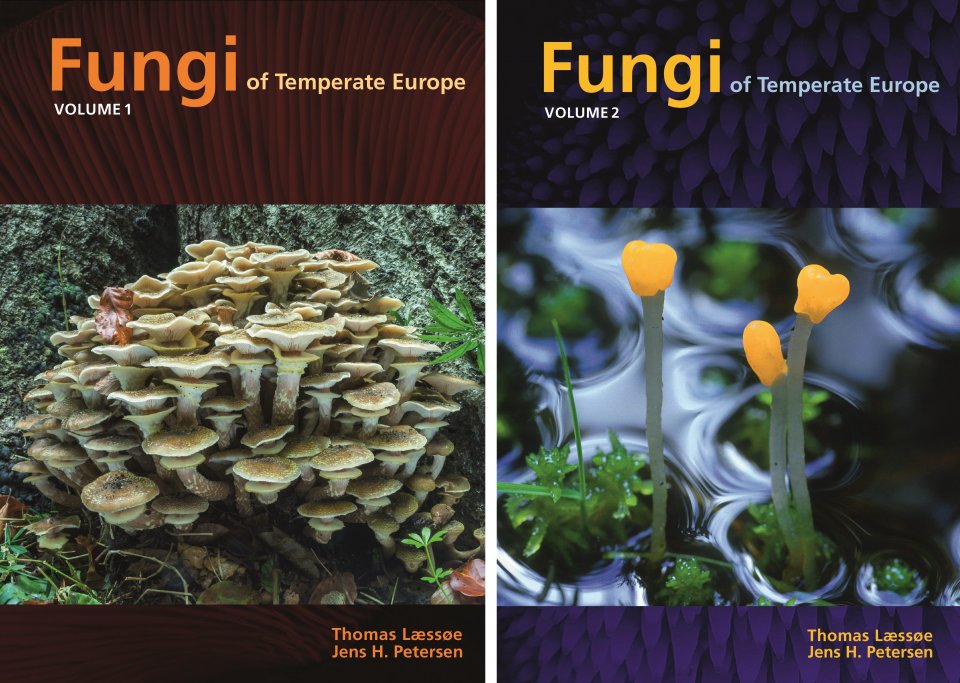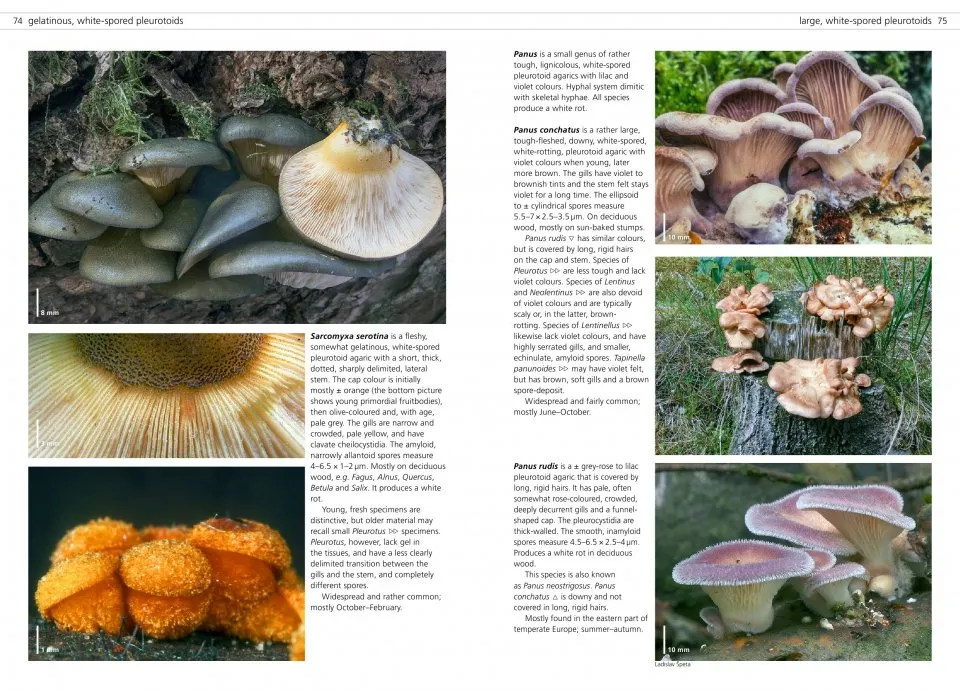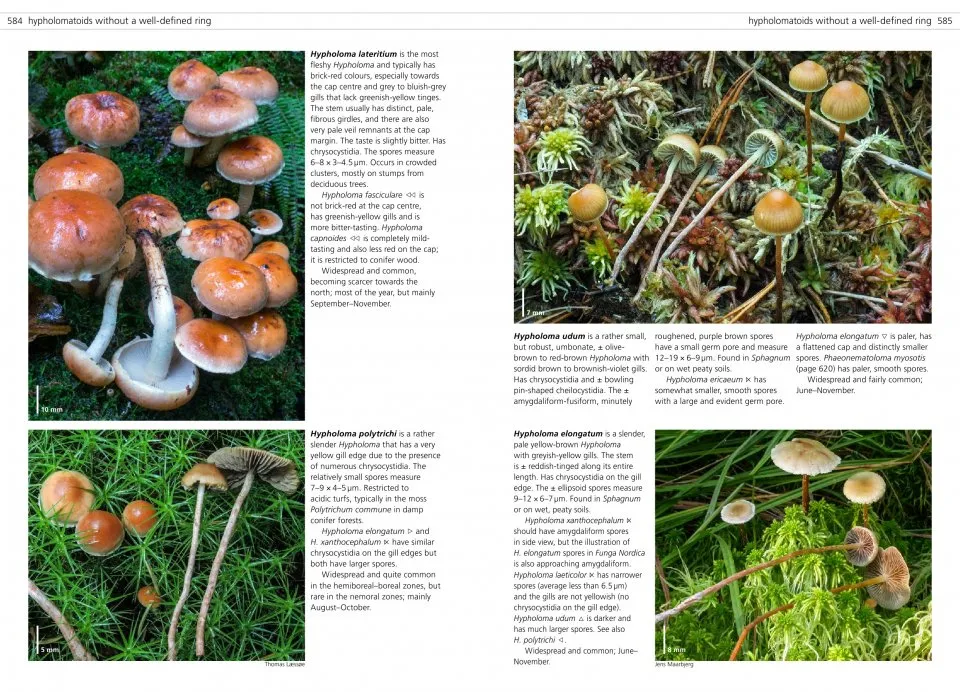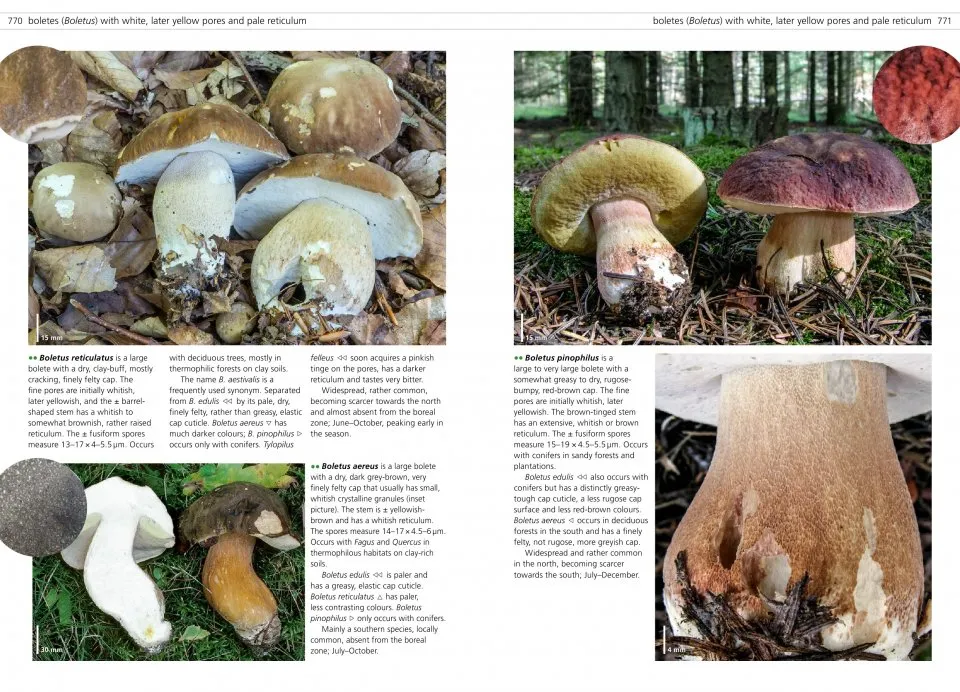There has been quite a run of mushroom books lately, each outdoing the last in terms of the quality of the illustrations, but this one simply takes your breath away. Everything about Fungi of Temperate Europe is on the grandest scale. We could start with the weight: well over 5kg for the two volumes. There are roughly 7,000 colour photographs (yes, you read that right), many of them occupying a third or a half of a page. Some 2,500 species are described, including nearly every fungus you can identify without a microscope (and a lot that you cannot). The first volume of ages includes all the gilled fungi (mushrooms and toadstools) plus the boletes. The second, which takes us to 1,715 pages, includes all the rest: brackets, puffballs, jelly fungi, coral fungi, hydnoids, cup fungi and truffles, with a nod at rusts and smuts, mildews, lichens and slime moulds (and, yes, the authors are well aware that the latter are not fungi). The quality of the images is constantly stunning. I have spent many pleasant coffee breaks just marvelling at them.
View this book on the NHBS website
The key question is: how well does it work as an ID guide? (It is, self-evidently, not a field guide.) Fungi of Temperate Europe covers a large area, from the Arctic to the fringes of the Alps, including the whole of Scandinavia, the Baltic States, and lowland central Europe, along with the Atlantic fringe from northern Spain to Britain and Ireland. Hence it includes many Continental species that have not been found in Britain, though fewer than you might suppose, for fungi tend to be more widely distributed than plants. The key feature of this work is a means of swift identification to genus, which the authors call the fungal wheel. It, in turn, is based on a method devised by the authors and their colleagues, available online as the MycoKey. With a wheel or two at the start of each new batch of fungi, it is an attractive, illustrative way of getting to the right group quickly, certainly much more quickly than with technical synoptic keys. Getting to the genus is usually, however, the easy bit (or was, until they started exploding former genera after molecular research indicated the latter’s artificiality). It is the identifying of species that is the real trouble. Here the task is facilitated by grouping together look-alikes, and, crucially, describing the differences between them. Remarkably few field guides bother to do this, and so this aspect of the book gets a gold star from me.
Although the authors do their level best to make the subject accessible – jargon is minimal – the book will be most useful to those with some previous experience of identifying fungi. You get used to the faintly odd language, some of which is not in the glossary: for example, ‘meteoric’ (meaning, I think, appearing in sudden spasms at long intervals), ‘sordid’ (dirty-looking), ‘speciose’ (a genus with lots of species in it), ‘turgid’ (fresh and swollen with fluid). This is an international publication, so there are no English names; and only the latest up-to-the-minute scientific names, although in many cases the authors mention the previous, more familiar, name. The arrangement, in groups of broadly similar-looking species, is user-friendly (for example, ’little brown mushrooms’, ‘clustered polypores’, ‘spiny corticoids’, ‘perennial, pale-fleshed white-rotters’ etc).
The main index is stuck at the end of volume 2, which is annoying when you are busy with volume 1. Fortunately, there is an index to genera on the front boards and an abbreviated glossary at the back.
The authors are both English-speaking Danes, and Laessoe, at least, has worked in Britain and knows British fungi. The habitat descriptions seem broadly appropriate to British conditions (we are in the ‘nemoral’ zone). The text, including the usual introductory section on fungal lives and identification, is, allowing for its international flavour, excellent. But the greatest strength of Fungi of Temperate Europe lies in its illustrations, which, I repeat, are simply glorious. For such a work, the price seems pretty reasonable really.




